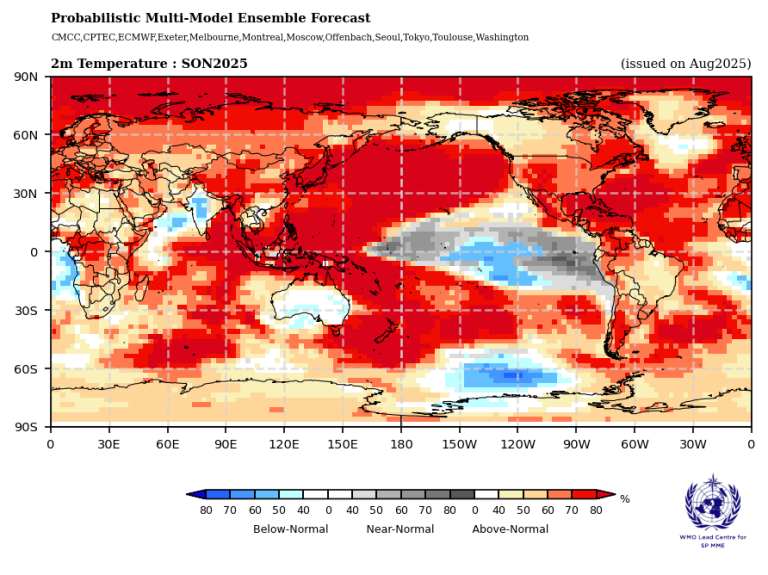The World Meteorological Organization (WMO) has released its latest seasonal update, highlighting the likely influence of developing La Niña conditions on global weather over the coming months. The climate phenomenon is expected to trigger above-average rainfall and flood risks in certain areas, while northern regions could face drier-than-normal conditions.
What is La Niña?
La Niña is characterized by cooler-than-average sea surface temperatures in the central and eastern Pacific Ocean. These temperature shifts alter atmospheric circulation, affecting precipitation and temperature patterns worldwide. According to the WMO, Southeast Asia, parts of South America, and Eastern Africa may experience increased rainfall, heightening the risk of flooding, landslides, and other climate-related hazards.
Regions at Risk of Drought
Conversely, North America and parts of northern Europe could see below-average precipitation. These drier conditions raise concerns about droughts, water shortages, and agricultural stress, potentially impacting local economies and food security.
Preparedness and Monitoring
The WMO urges governments, communities, and disaster management agencies to prepare for potential La Niña impacts by strengthening early warning systems and risk mitigation measures. Experts emphasize that careful monitoring of La Niña is critical for agricultural planning, water resource management, and disaster preparedness.
The WMO will continue to provide updates as conditions evolve, offering guidance to help countries and communities navigate the seasonal weather challenges posed by this climate phenomenon.

